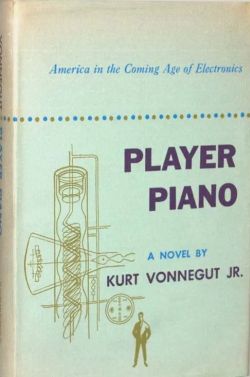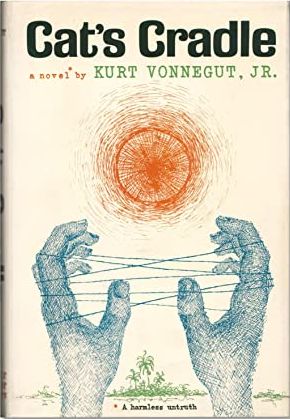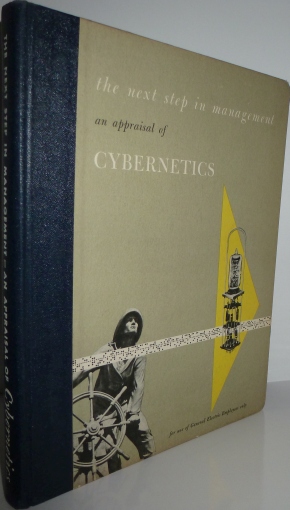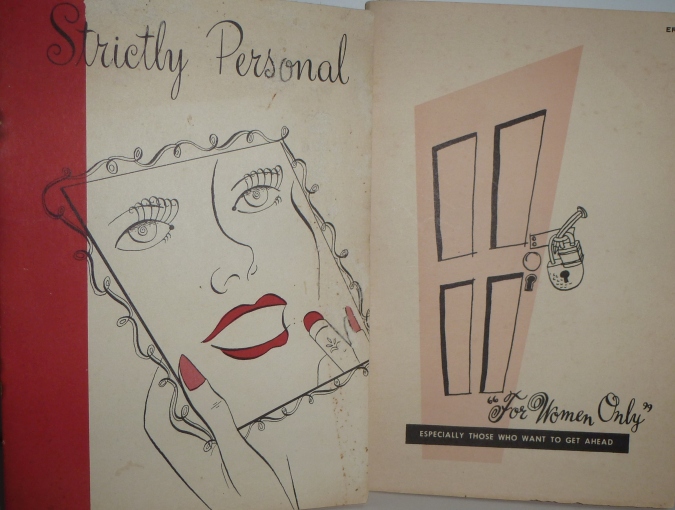 In a 1973 interview, author Kurt Vonnegut, discussed his inspiration to write his first novel, the dystopian, Player Piano (1952). He cheerfully acknowledged that he ripped off the plot of Aldous Huxley’s Brave New World (1932), whose plot had been cheerfully ripped off from Yevgeny Zamyatin’s We (1924). Kurt Vonnegut’s story about the “National Manufacturing Council” which created a society without tolerance for inefficiency or privation had a potential second source of inspiration: the General Electric Research Laboratory.
In a 1973 interview, author Kurt Vonnegut, discussed his inspiration to write his first novel, the dystopian, Player Piano (1952). He cheerfully acknowledged that he ripped off the plot of Aldous Huxley’s Brave New World (1932), whose plot had been cheerfully ripped off from Yevgeny Zamyatin’s We (1924). Kurt Vonnegut’s story about the “National Manufacturing Council” which created a society without tolerance for inefficiency or privation had a potential second source of inspiration: the General Electric Research Laboratory.
G.E., in Schenectady, NY hired scientists and let them pursue pure research. Kurt Vonnegut’s job, as a research-laboratory publicist, was to interview these scientists and find interesting stories about their research to promote. The lab was home to early technological breakthroughs which set the standard for industrial innovation for years to come. While still employed by G.E., he delivered his first independent publication, a short story in the Feb 11, 1950 issue of Collier’s, which earned him $750. The short story is titled Report on the Barnhouse Effect, and it is about a scientist with telekinetic powers who refuses to use them for military purposes. Kurt departed G.E. the following year, in 1951, to work on his first novel, Player Piano.
1952, was also the year that G.E. started publishing confidential employee information such as The Next Step in Management – an Appraisal of Cybernetics. The report analyzed the extent to which Electronic machines, systems and controls could replace manual labor as well as white collar labor. The book prematurely included prospective effects through the availability of “thinking machines.” The term, Cybernetics, was first used by Norbert Wiener, in his book Cybernetics, or Control and Communication in the Animal and the Machine (1948). First printing of this book sells about $1,000.
At the same time, at a non-technical level, G.E. distributed publications such as For Women Only and Strictly Personal. Such booklets instructed female employees on how to dress and present themselves to the male boss: “The main thing is to smell nice and clean and look well scrubbed as you hurry about your daily tasks.”1 “Although he may not be the most important in your life, the man you call ‘boss’ is going to be tremendous influence in your life from now on. As he advances, so will you; and you can help him to get ahead just that much faster by being an efficient operator in your office.” 2
In the 1973 Playboy interview, Kurt Vonnegut Jr., when asked what attracted him to the science fiction form, responded: “I was working for General Electric at the time, right after World War II, and I saw a milling machine for cutting the rotors on jet engines, gas turbines. This was a very expensive thing for a machinist to do, to cut what is essentially one of those Brâncuși forms. So they had a computer-operated milling machine built to cut the blades, and I was fascinated by that. This was in 1949 and the guys who were working on it were foreseeing all sorts of machines being run by little boxes and punched cards. Player Piano was my response to the implications of having everything run by little boxes. The idea of doing that, you know, made sense, perfect sense. To have a little clicking box make all the decisions wasn’t a vicious thing to do. But it was too bad for the human beings who got their dignity from their jobs.” 3 Player Piano was published by Charles Scribner’s Sons, and later, in 1954, was released in paperback by Bantam Books under the title Utopia 14, in an effort to drive sales with readers of science fiction.
Inventions and experiments by G.E. scientists within a corporate culture that emphasized a sense of agency inspired Kurt’s early stories: Thanasphere in which a boundary layer between the Earth’s atmosphere and outer space is filled with the voices of ghosts, and Epicac in which a super intelligent computer kills itself in a fit of  existential angst. Both stories were originally published by Collier’s. He was always chafed, at what Ginger Strand calls “GE’s techno-utopianism.” 4
existential angst. Both stories were originally published by Collier’s. He was always chafed, at what Ginger Strand calls “GE’s techno-utopianism.” 4
Bernard Vonnegut, Kurt’s older brother, joined the lab in 1945, and worked on the “Cirrus” cloud seeding project. Cat’s Cradle (1963) features a military program along the lines of project “Cirrus”, with substance “ice-nine” which brings about an apocalypse by freezing all the water on Earth. In his 1969 address to the American Physical Society, Vonnegut described the inspiration behind “ice-nine” and its creator, as the type of “old-fashioned scientist who isn’t interested in people”, and drew connections to the threat of nuclear destruction in the Cold War.
Science fiction may very well possess the unique ability to shape our future through imagined technologies. As a result of his experience at G.E., Kurt Vonnegut, had his early science fiction framed to mirror the present in an allegorical way instead of a projection into an imaginary future.
1 Strictly Personal (GE, 1952) 4-5.
2 For Women Only (GE, 1948) 3.
3 Playboy Magazine interview with Kurt Vonnegut, Jr., July 1973.
4 Ginger Strand, The Brothers Vonnegut: Science and Fiction in the House of Magic ( Farrar, Straus & Giroux, 2015)



{ 0 comments… add one now }